Opinion & Analysis
13 Revealing Photos from an AJGA golf event
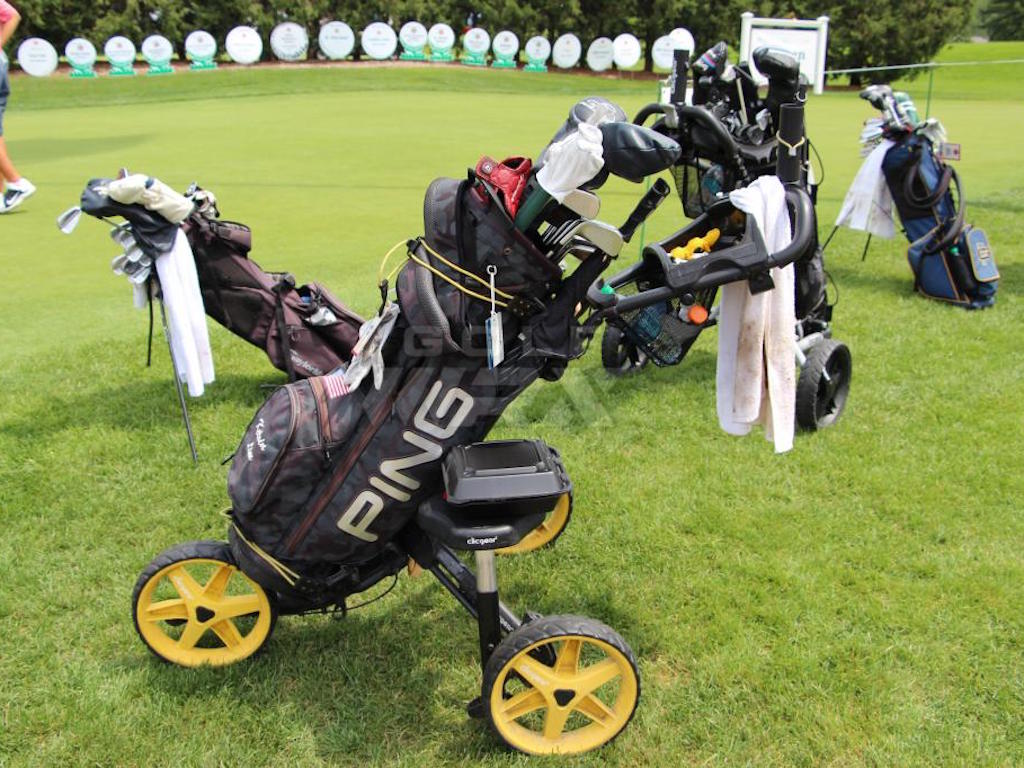
The American Junior Golf Association (AJGA) is a breeding ground for college golfers; according to its mission statement, the AJGA is a “nonprofit organization dedicated to the overall growth and development of young men and women who aspire to earn college golf scholarships through competitive junior golf.” Some of the best juniors in the country/world collect at AJGA golf events to compete, hone their competitive skills, and also to showcase their talents to college recruiters who use AJGA scores, finishes and performances to evaluate prospective student-athletes. They also pay a lot of money to play in these events — this particular 54-hole event cost $295 entry fee (plus any travel, lodging and practice rounds).
Name a player on the PGA Tour, and chances are he played in AJGA events as a junior… Tiger Woods, Phil Mickelson, Sergio Garcia, Bubba Watson, Dustin Johnson, Jordan Spieth, Rickie Fowler, whoever you can think of really. Even yours truly, the GolfWRX Editor, once upon a time played in AJGA events. But that was over 10 years ago now, and I wanted to revisit an AJGA event to see how things have changed.
So, recently, I went to the AJGA Junior at Forest Lake presented by Tom Holzer Ford in Bloomfield Hills, Michigan to cover the event. Below are my takeaways.
Listen to the Two Guys Talking Golf podcast for more of my opinions and takeaways!
1) Treated like Tour players
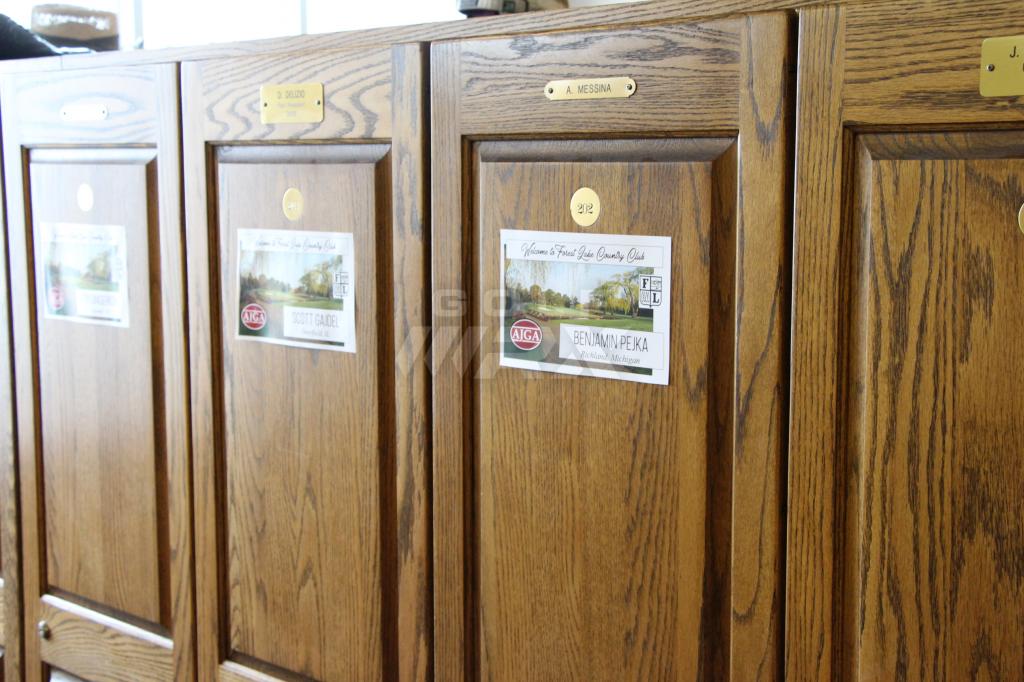
Each of the players are given individual lockers with their names on them for the week. I’ve always been a change-the-shoes-in-the-parking-lot kind of guy myself, but this is a nice touch.
2) It’s official
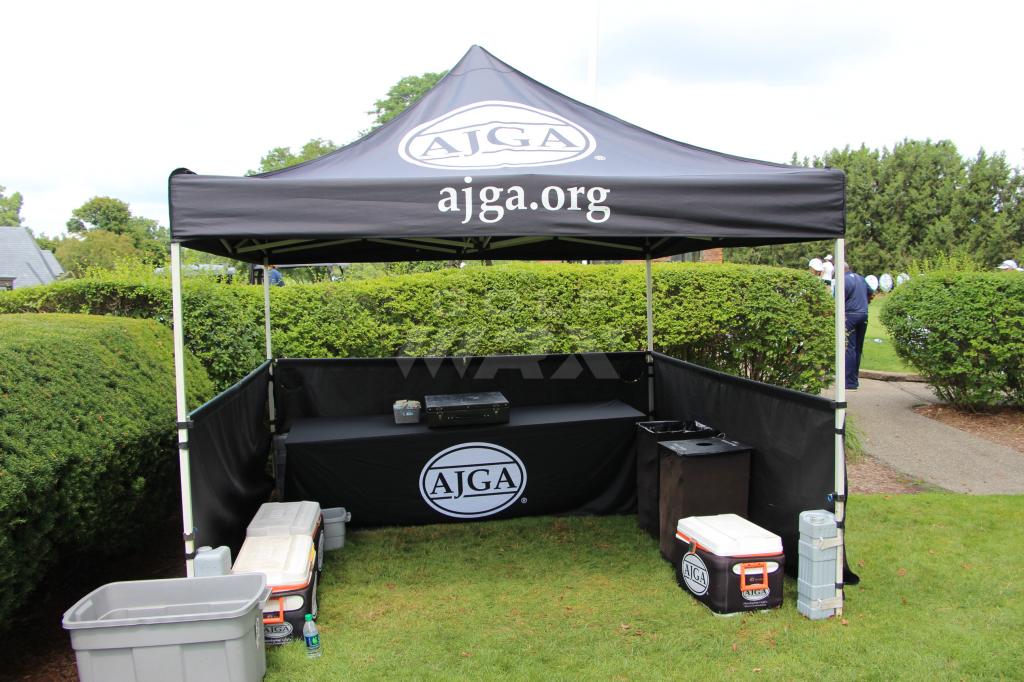
Like most professional events, the AJGA events have tents, waters, granola bars, tees, scorecards and pencils on the first tee. And they announce your name/hometown, which is always intimidating.
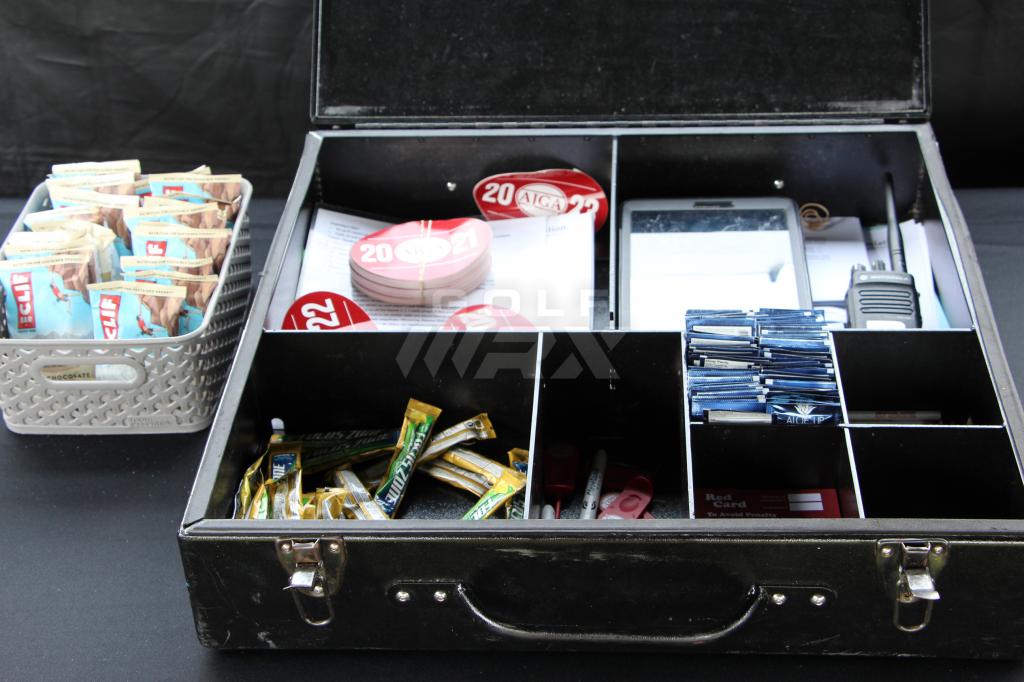
3) Sponsors
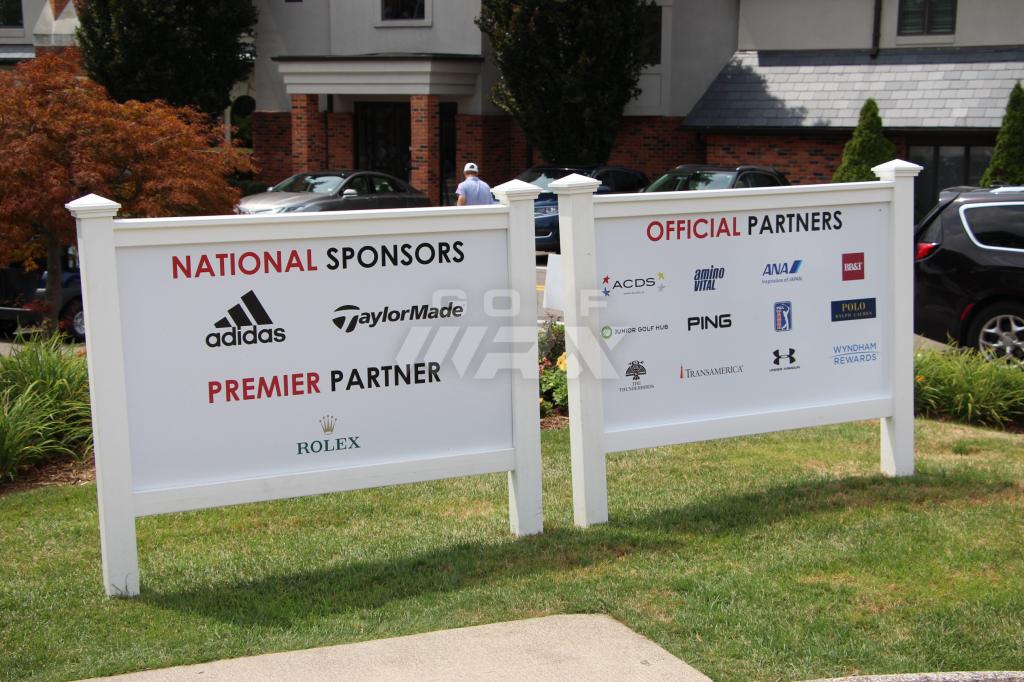
As a popular junior golf organization, the AJGA attracts a number of big-name sponsors.
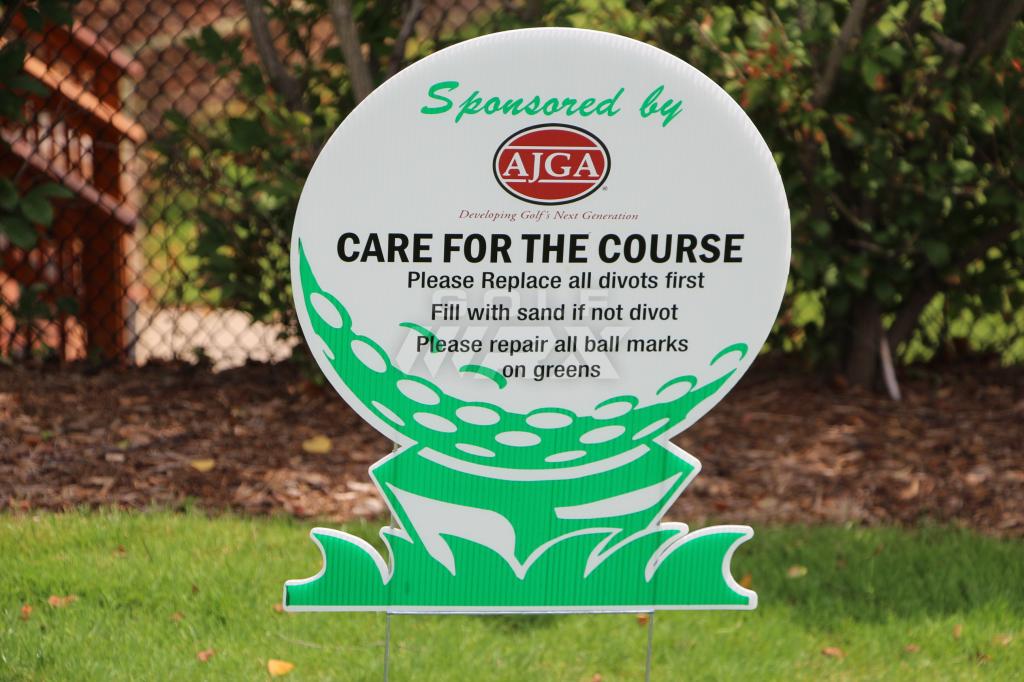
But the most important sponsor is Care for the Course. These kids hit pretty much every green, so repairing ball marks on the green is crucial.
4) College Coaches do show up
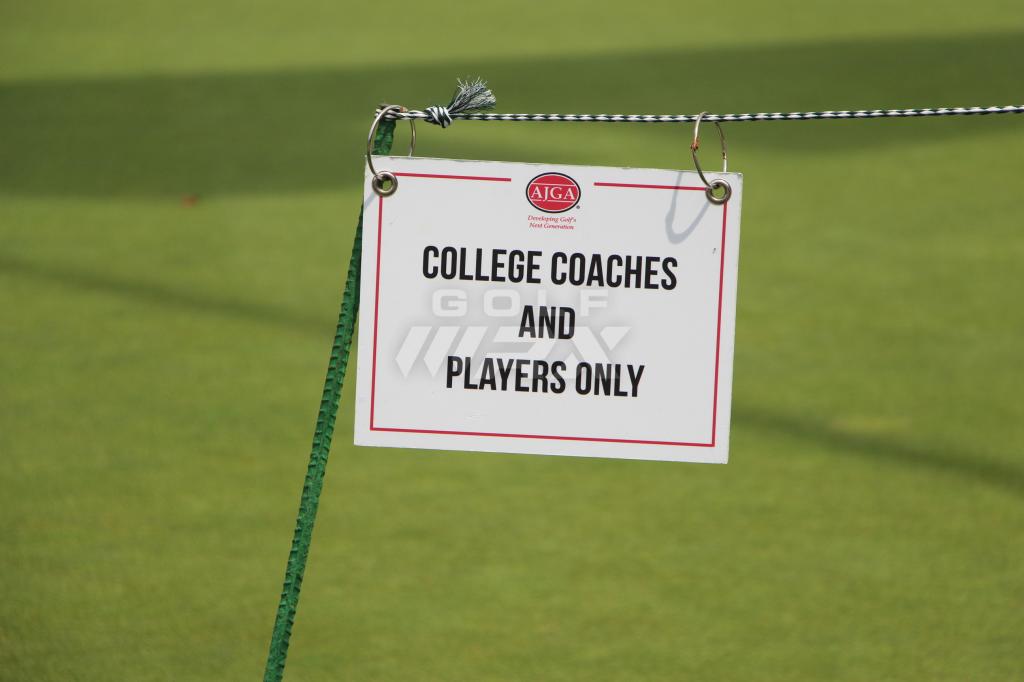
During the first round of a random AJGA event in Michigan, there were a number of college coaches on site, representing DI, DII and DIII colleges. While that does mean added pressure for the 12-18 year old kids, it also means that playing well in these events could very well land you a scholarship. After talking with a few of the college coaches, however, it’s often positive body language even after a double bogey that can really impress coaches. Juniors, keep that one in mind.
5) Push carts, or carry bags?
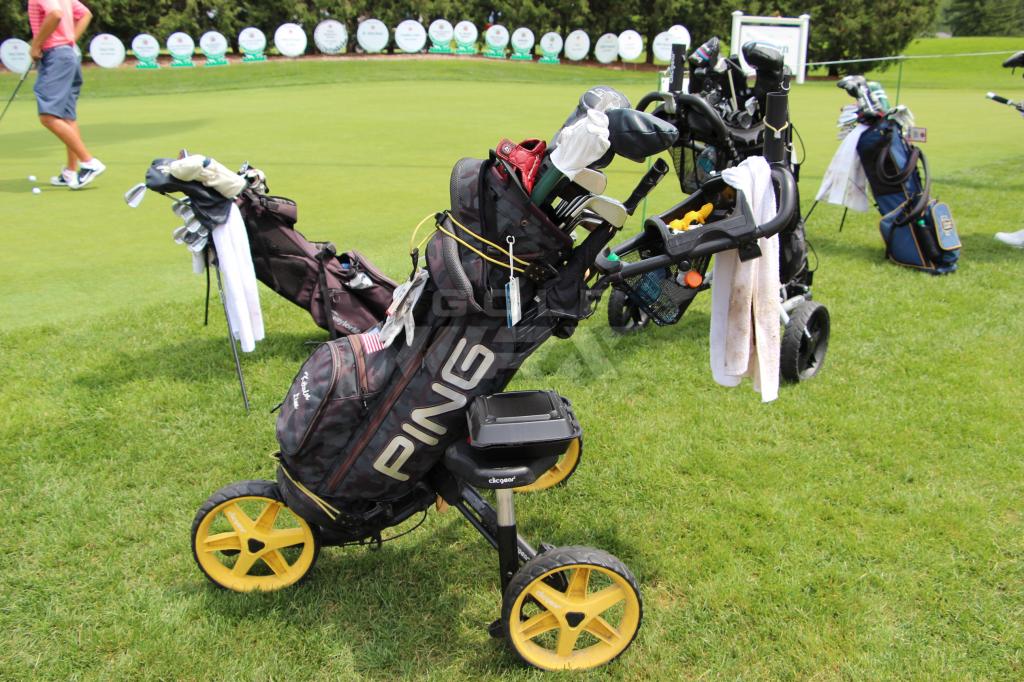
By my estimation, about 70 percent of the competitors used pull carts. Back in my days of AJGA golf, it was rare to find 1 or 2 juniors using push carts. Why the change? Well, it seems kids have smartened up. Speaking with a few competitors, it seems they prefer push carts over carry bags because it adds additional space for water bottles, scorecards, weather gear, umbrellas, and it’s easier on your body during long rounds.
6) Yea, these kids are good
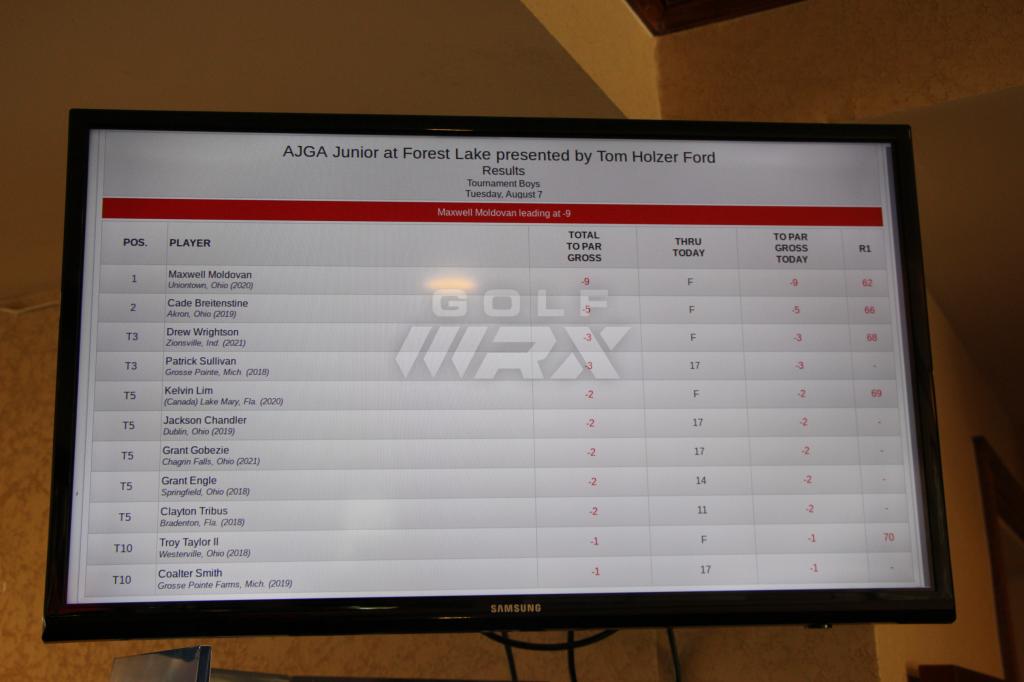
16-year-old Maxwell Moldovan shot a 9-under 62 (and course record) in the first round of the event. He made 9 birdies against 9 pars. Speaking with him after the round, he seemed unfazed by the 62, instead enjoying his position and plotting his first AJGA victory. These kids just have no fear. (Also, live scoring is awesome).
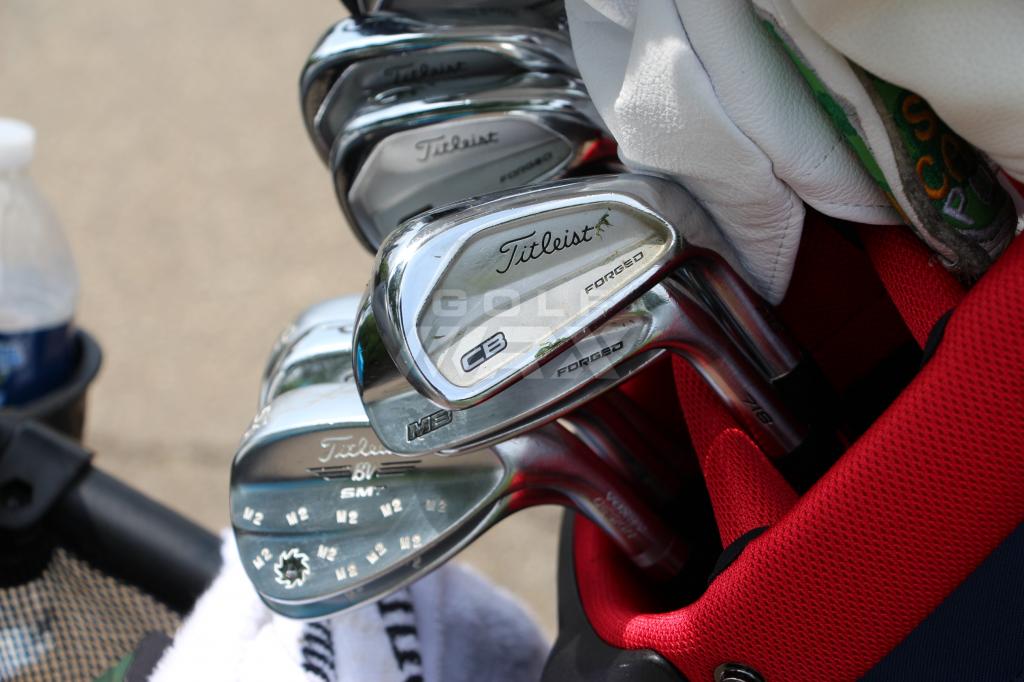
The new course record holder was gaming a mixed iron set of Titleist CBs and MBs (as shown above), and was using custom Titleist SM7 wedges stamped with “M2,” surely a play on his initials. And yes, he’s pro-push cart.
7) The most nerve-racking moment in the round
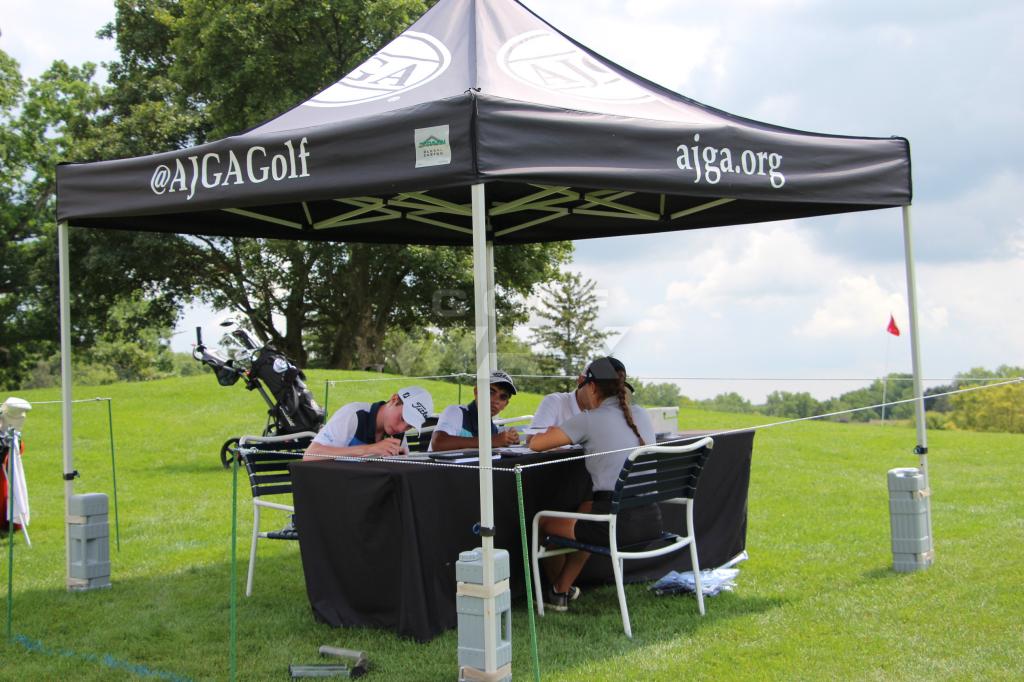
Have you ever shot a great round in a tournament, then been nervous you’d make a stupid scoring mistake and get DQ’d, so you go over your round multiple times to confirm the scores? I know I can’t be alone.
8) Tough track

The quirky, par-71 golf course measured just 6,283 yards on the scorecard — AJGA employees estimate most events are played between 6,800 and 7,200 yards — but many of the holes seemed to either take driver out of the players’ hands (although they typically hit driver anyway), or at least made hitting driver very difficult.
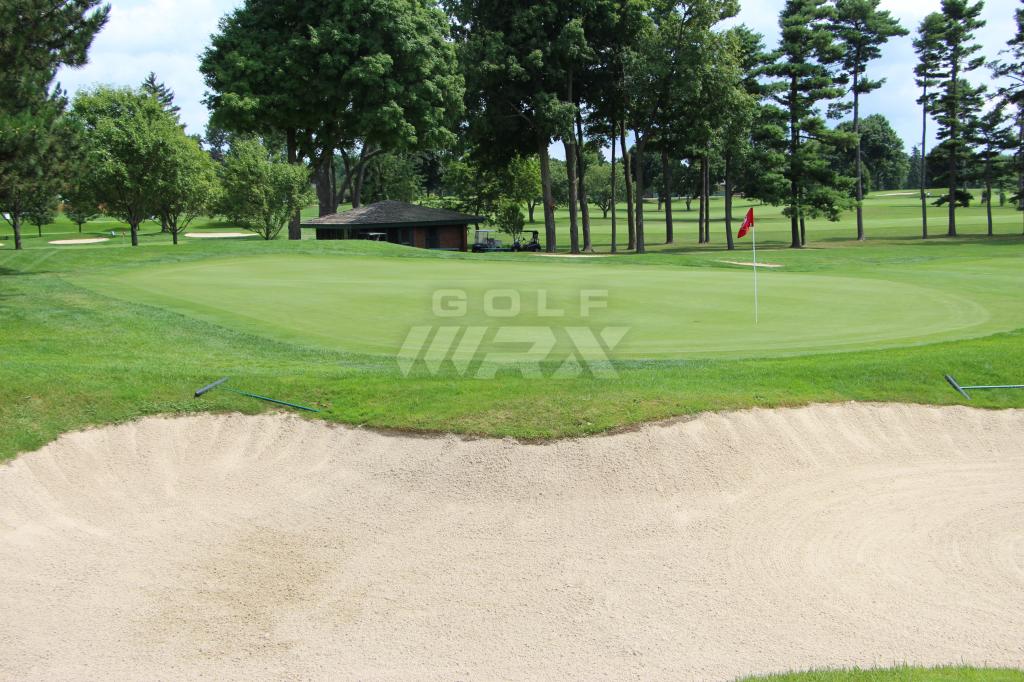
Plus, they had pins tucked pretty good. After the round, participants estimated the greens were running at about a 12 on the stimp, and one player said “the greens were some of the hardest I’ve putted on all summer.”
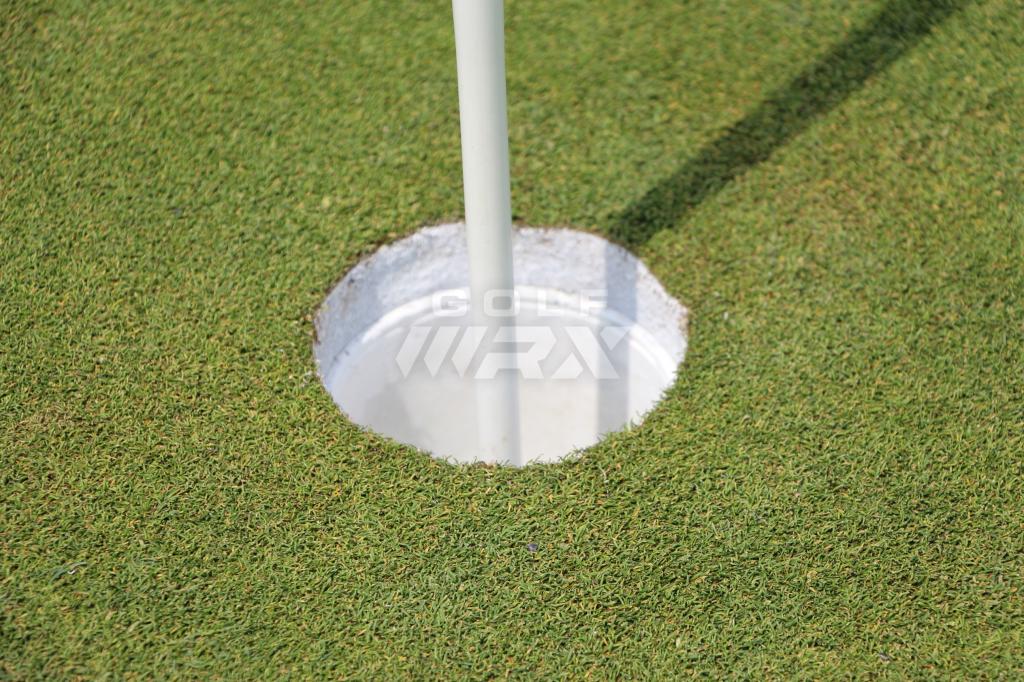
Also, painted dirt inside the cups goes a long way to making the tournament feel more official. I thought they painted cups white so the TV cameras could better see where the hole is, and as far as I know this AJGA event wasn’t televised, but hey, it looks cool.
9) Keeping up
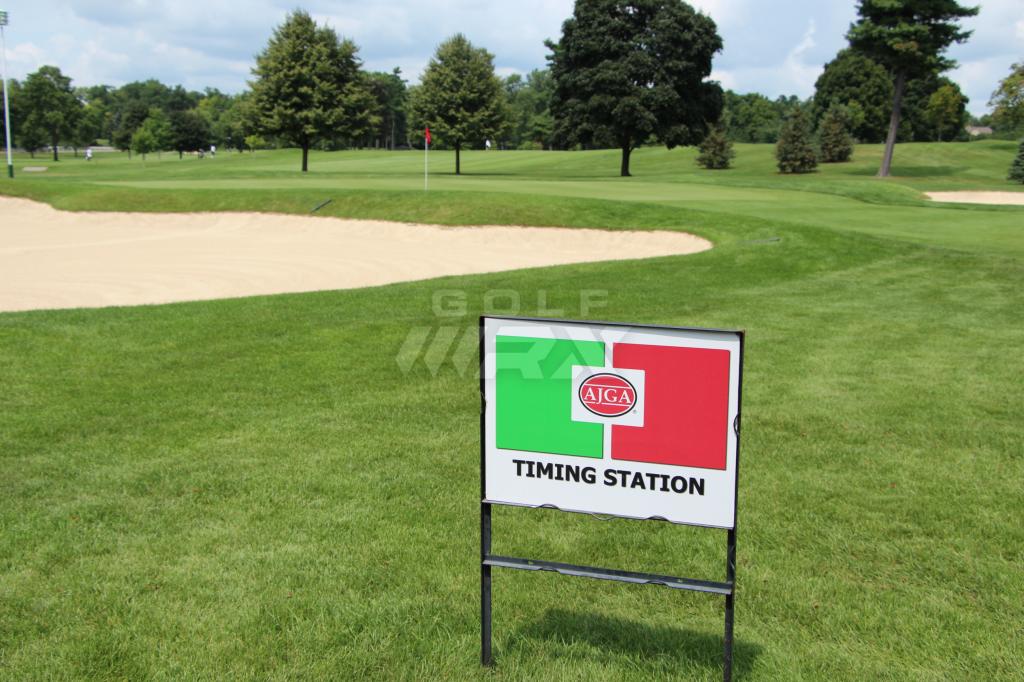
The AJGA keeps players moving, timing them on a number of holes at “timing stations,” and handing out warnings for slow play. Enough warnings and the group gets reprimanded with a penalty stroke. There’s not nearly as much leeway out here as on the PGA Tour… they do actually hand out penalty strokes, and the participants seemed well aware of that.
10) Cross-hand putting grips
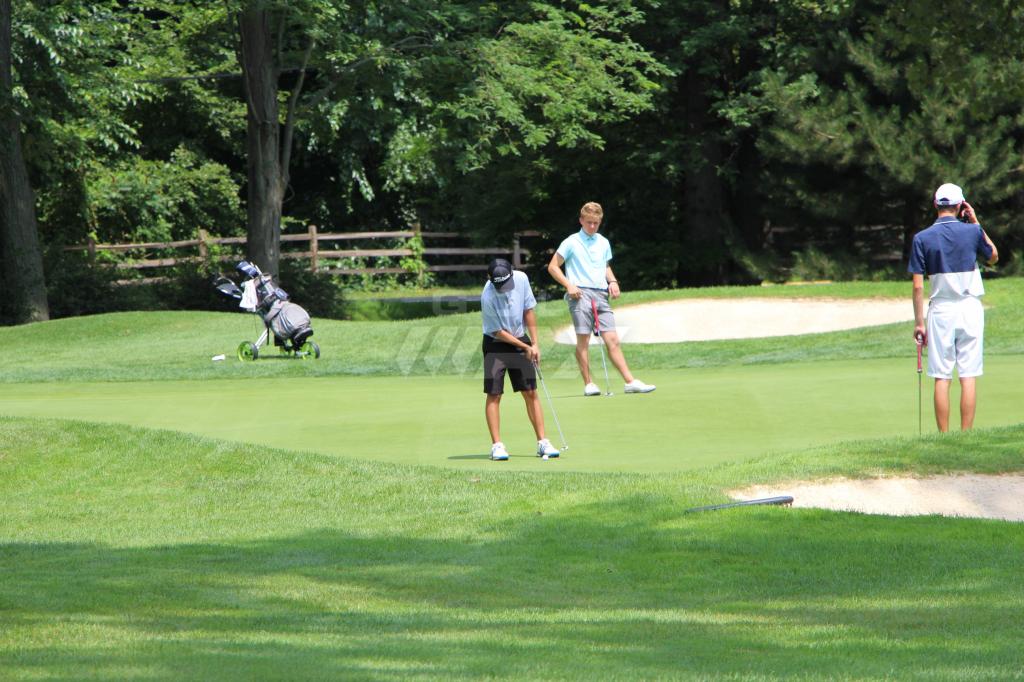
Everyone out there was using a cross-handed putting grip. Literally, everyone I saw was putting cross-handed.
11) Rules officials
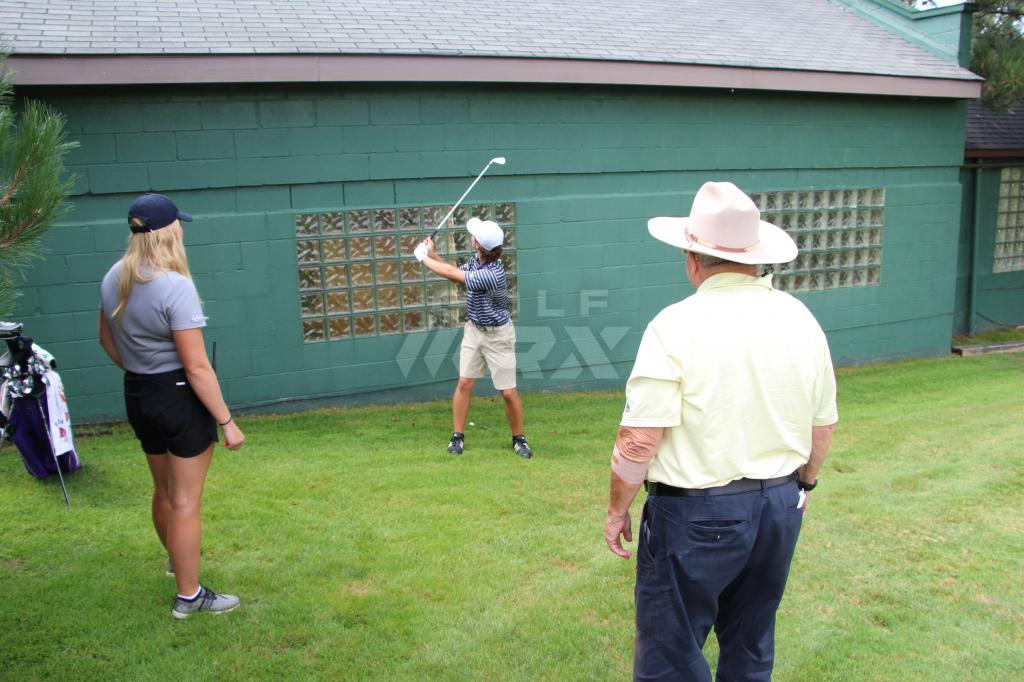
Like any big tournament, rules officials swarm the course. This kid hooked his tee shot up against an outhouse, and resolved the situation with a volunteer and a rules official. As soon as he hit his shot, he asked to make sure “Are we still on pace?” That’s the timing stations doing their jobs.
12) Parents
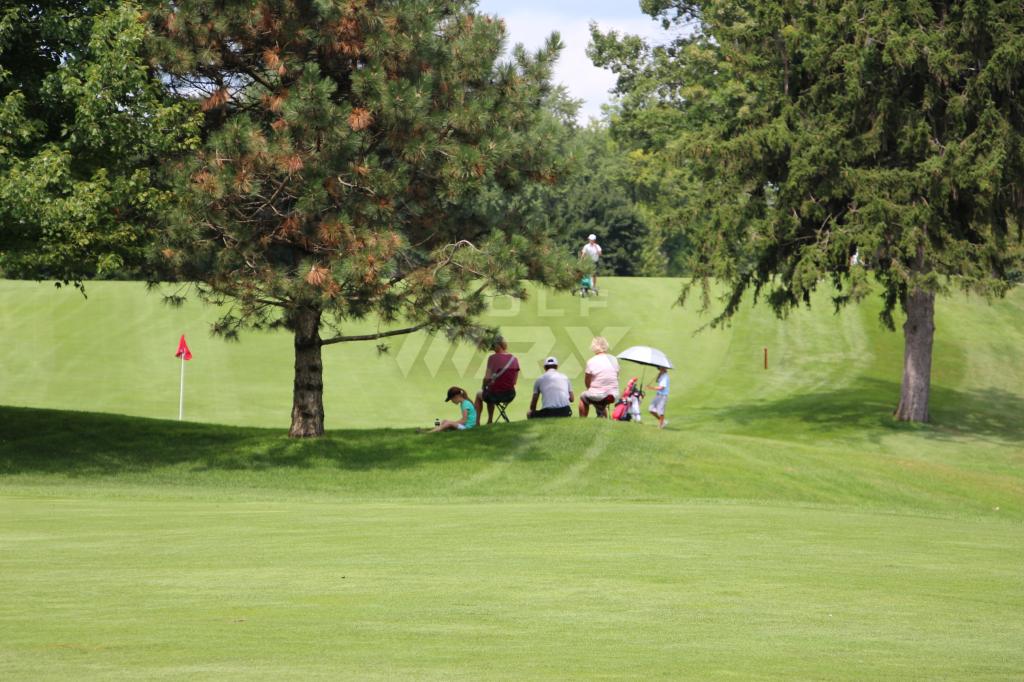
Parents can be seen all over the course, following their son/daughter, grinding over each shot just as hard or harder than the players themselves.
“I’m holding up OK, but my husband might have a heart attack,” one mother of a first-time AJGA participant told me. The pressure is real out there for everyone involved.
13) And that’s all she wrote

Check out more photos from the AJGA event here
- LIKE54
- LEGIT3
- WOW0
- LOL0
- IDHT0
- FLOP0
- OB0
- SHANK4
19th Hole
Vincenzi’s 2024 Zurich Classic of New Orleans betting preview

The PGA TOUR heads to New Orleans to play the 2023 Zurich Classic of New Orleans. In a welcome change from the usual stroke play, the Zurich Classic is a team event. On Thursday and Saturday, the teams play best ball, and on Friday and Sunday the teams play alternate shot.
TPC Louisiana is a par 72 that measures 7,425 yards. The course features some short par 4s and plenty of water and bunkers, which makes for a lot of exciting risk/reward scenarios for competitors. Pete Dye designed the course in 2004 specifically for the Zurich Classic, although the event didn’t make its debut until 2007 because of Hurricane Katrina.
Coming off of the Masters and a signature event in consecutive weeks, the field this week is a step down, and understandably so. Many of the world’s top players will be using this time to rest after a busy stretch.
However, there are some interesting teams this season with some stars making surprise appearances in the team event. Some notable teams include Patrick Cantlay and Xander Schauffele, Rory McIlroy and Shane Lowry, Collin Morikawa and Kurt Kitayama, Will Zalatoris and Sahith Theegala as well as a few Canadian teams, Nick Taylor and Adam Hadwin and Taylor Pendrith and Corey Conners.
Past Winners at TPC Louisiana
- 2023: Riley/Hardy (-30)
- 2022: Cantlay/Schauffele (-29)
- 2021: Leishman/Smith (-20)
- 2019: Palmer/Rahm (-26)
- 2018: Horschel/Piercy (-22)
- 2017: Blixt/Smith (-27)
2024 Zurich Classic of New Orleans Picks
Tom Hoge/Maverick McNealy +2500 (DraftKings)
Tom Hoge is coming off of a solid T18 finish at the RBC Heritage and finished T13 at last year’s Zurich Classic alongside Harris English.
This season, Hoge is having one of his best years on Tour in terms of Strokes Gained: Approach. In his last 24 rounds, the only player to top him on the category is Scottie Scheffler. Hoge has been solid on Pete Dye designs, ranking 28th in the field over his past 36 rounds.
McNealy is also having a solid season. He’s finished T6 at the Waste Management Phoenix Open and T9 at the PLAYERS Championship. He recently started working with world renowned swing coach, Butch Harmon, and its seemingly paid dividends in 2024.
Keith Mitchell/Joel Dahmen +4000 (DraftKings)
Keith Mitchell is having a fantastic season, finishing in the top-20 of five of his past seven starts on Tour. Most recently, Mitchell finished T14 at the Valero Texas Open and gained a whopping 6.0 strokes off the tee. He finished 6th at last year’s Zurich Classic.
Joel Dahmen is having a resurgent year and has been dialed in with his irons. He also has a T11 finish at the PLAYERS Championship at TPC Sawgrass which is another Pete Dye track. With Mitchell’s length and Dahmen’s ability to put it close with his short irons, the Mitchell/Dahmen combination will be dangerous this week.
Taylor Moore/Matt NeSmith +6500 (DraftKings)
Taylor Moore has quickly developed into one of the more consistent players on Tour. He’s finished in the top-20 in three of his past four starts, including a very impressive showing at The Masters, finishing T20. He’s also finished T4 at this event in consecutive seasons alongside Matt NeSmith.
NeSmith isn’t having a great 2024, but has seemed to elevate his game in this format. He finished T26 at Pete Dye’s TPC Sawgrass, which gives the 30-year-old something to build off of. NeSmith is also a great putter on Bermudagrass, which could help elevate Moore’s ball striking prowess.
- LIKE7
- LEGIT3
- WOW1
- LOL1
- IDHT0
- FLOP3
- OB1
- SHANK1
19th Hole
Vincenzi’s 2024 LIV Adelaide betting preview: Cam Smith ready for big week down under

After having four of the top twelve players on the leaderboard at The Masters, LIV Golf is set for their fifth event of the season: LIV Adelaide.
For both LIV fans and golf fans in Australia, LIV Adelaide is one of the most anticipated events of the year. With 35,000 people expected to attend each day of the tournament, the Grange Golf Club will be crawling with fans who are passionate about the sport of golf. The 12th hole, better known as “the watering hole”, is sure to have the rowdiest of the fans cheering after a long day of drinking some Leishman Lager.
The Grange Golf Club is a par-72 that measures 6,946 yards. The course features minimal resistance, as golfers went extremely low last season. In 2023, Talor Gooch shot consecutive rounds of 62 on Thursday and Friday, giving himself a gigantic cushion heading into championship Sunday. Things got tight for a while, but in the end, the Oklahoma State product was able to hold off The Crushers’ Anirban Lahiri for a three-shot victory.
The Four Aces won the team competition with the Range Goats finishing second.
*All Images Courtesy of LIV Golf*
Past Winners at LIV Adelaide
- 2023: Talor Gooch (-19)
Stat Leaders Through LIV Miami
Green in Regulation
- Richard Bland
- Jon Rahm
- Paul Casey
Fairways Hit
- Abraham Ancer
- Graeme McDowell
- Henrik Stenson
Driving Distance
- Bryson DeChambeau
- Joaquin Niemann
- Dean Burmester
Putting
- Cameron Smith
- Louis Oosthuizen
- Matt Jones
2024 LIV Adelaide Picks
Cameron Smith +1400 (DraftKings)
When I pulled up the odds for LIV Adelaide, I was more than a little surprised to see multiple golfers listed ahead of Cameron Smith on the betting board. A few starts ago, Cam finished runner-up at LIV Hong Kong, which is a golf course that absolutely suits his eye. Augusta National in another course that Smith could roll out of bed and finish in the top-ten at, and he did so two weeks ago at The Masters, finishing T6.
At Augusta, he gained strokes on the field on approach, off the tee (slightly), and of course, around the green and putting. Smith able to get in the mix at a major championship despite coming into the week feeling under the weather tells me that his game is once again rounding into form.
The Grange Golf Club is another course that undoubtedly suits the Australian. Smith is obviously incredibly comfortable playing in front of the Aussie faithful and has won three Australian PGA Championship’s. The course is very short and will allow Smith to play conservative off the tee, mitigating his most glaring weakness. With birdies available all over the golf course, there’s a chance the event turns into a putting contest, and there’s no one on the planet I’d rather have in one of those than Cam Smith.

Louis Oosthuizen +2200 (DraftKings)
Louis Oosthuizen has simply been one of the best players on LIV in the 2024 seas0n. The South African has finished in the top-10 on the LIV leaderboard in three of his five starts, with his best coming in Jeddah, where he finished T2. Perhaps more impressively, Oosthuizen finished T7 at LIV Miami, which took place at Doral’s “Blue Monster”, an absolutely massive golf course. Given that Louis is on the shorter side in terms of distance off the tee, his ability to play well in Miami shows how dialed he is with the irons this season.
In addition to the LIV finishes, Oosthuizen won back-to-back starts on the DP World Tour in December at the Alfred Dunhill Championship and the Mauritus Open. He also finished runner-up at the end of February in the International Series Oman. The 41-year-old has been one of the most consistent performers of 2024, regardless of tour.
For the season, Louis ranks 4th on LIV in birdies made, T9 in fairways hit and first in putting. He ranks 32nd in driving distance, but that won’t be an issue at this short course. Last season, he finished T11 at the event, but was in decent position going into the final round but fell back after shooting 70 while the rest of the field went low. This season, Oosthuizen comes into the event in peak form, and the course should be a perfect fit for his smooth swing and hot putter this week.

- LIKE12
- LEGIT3
- WOW0
- LOL1
- IDHT0
- FLOP1
- OB1
- SHANK1
Opinion & Analysis
The Wedge Guy: What really makes a wedge work? Part 1

Of all the clubs in our bags, wedges are almost always the simplest in construction and, therefore, the easiest to analyze what might make one work differently from another if you know what to look for.
Wedges are a lot less mysterious than drivers, of course, as the major brands are working with a lot of “pixie dust” inside these modern marvels. That’s carrying over more to irons now, with so many new models featuring internal multi-material technologies, and almost all of them having a “badge” or insert in the back to allow more complex graphics while hiding the actual distribution of mass.
But when it comes to wedges, most on the market today are still single pieces of molded steel, either cast or forged into that shape. So, if you look closely at where the mass is distributed, it’s pretty clear how that wedge is going to perform.
To start, because of their wider soles, the majority of the mass of almost any wedge is along the bottom third of the clubhead. So, the best wedge shots are always those hit between the 2nd and 5th grooves so that more mass is directly behind that impact. Elite tour professionals practice incessantly to learn to do that consistently, wearing out a spot about the size of a penny right there. If impact moves higher than that, the face is dramatically thinner, so smash factor is compromised significantly, which reduces the overall distance the ball will fly.
Every one of us, tour players included, knows that maddening shot that we feel a bit high on the face and it doesn’t go anywhere, it’s not your fault.
If your wedges show a wear pattern the size of a silver dollar, and centered above the 3rd or 4th groove, you are not getting anywhere near the same performance from shot to shot. Robot testing proves impact even two to three grooves higher in the face can cause distance loss of up to 35 to 55 feet with modern ‘tour design’ wedges.
In addition, as impact moves above the center of mass, the golf club principle of gear effect causes the ball to fly higher with less spin. Think of modern drivers for a minute. The “holy grail” of driving is high launch and low spin, and the driver engineers are pulling out all stops to get the mass as low in the clubhead as possible to optimize this combination.
Where is all the mass in your wedges? Low. So, disregarding the higher lofts, wedges “want” to launch the ball high with low spin – exactly the opposite of what good wedge play requires penetrating ball flight with high spin.
While almost all major brand wedges have begun putting a tiny bit more thickness in the top portion of the clubhead, conventional and modern ‘tour design’ wedges perform pretty much like they always have. Elite players learn to hit those crisp, spinny penetrating wedge shots by spending lots of practice time learning to consistently make contact low in the face.
So, what about grooves and face texture?
Grooves on any club can only do so much, and no one has any material advantage here. The USGA tightly defines what we manufacturers can do with grooves and face texture, and modern manufacturing techniques allow all of us to push those limits ever closer. And we all do. End of story.
Then there’s the topic of bounce and grinds, the most complex and confusing part of the wedge formula. Many top brands offer a complex array of sole configurations, all of them admittedly specialized to a particular kind of lie or turf conditions, and/or a particular divot pattern.
But if you don’t play the same turf all the time, and make the same size divot on every swing, how would you ever figure this out?
The only way is to take any wedge you are considering and play it a few rounds, hitting all the shots you face and observing the results. There’s simply no other way.
So, hopefully this will inspire a lively conversation in our comments section, and I’ll chime in to answer any questions you might have.
And next week, I’ll dive into the rest of the wedge formula. Yes, shafts, grips and specifications are essential, too.
- LIKE32
- LEGIT7
- WOW1
- LOL1
- IDHT2
- FLOP3
- OB1
- SHANK3
-

 19th Hole2 weeks ago
19th Hole2 weeks agoDave Portnoy places monstrous outright bet for the 2024 Masters
-

 19th Hole2 weeks ago
19th Hole2 weeks agoTiger Woods arrives at 2024 Masters equipped with a putter that may surprise you
-

 19th Hole2 days ago
19th Hole2 days ago‘Absolutely crazy’ – Major champ lays into Patrick Cantlay over his decision on final hole of RBC Heritage
-

 19th Hole2 days ago
19th Hole2 days agoJustin Thomas on the equipment choice of Scottie Scheffler that he thinks is ‘weird’
-

 19th Hole3 weeks ago
19th Hole3 weeks agoReport: Tiger Woods has ‘eliminated sex’ in preparation for the 2024 Masters
-

 19th Hole1 week ago
19th Hole1 week agoTwo star names reportedly blanked Jon Rahm all week at the Masters
-

 19th Hole1 week ago
19th Hole1 week agoReport: LIV Golf identifies latest star name they hope to sign to breakaway tour
-

 19th Hole1 week ago
19th Hole1 week agoNeal Shipley presser ends in awkward fashion after reporter claims Tiger handed him note on 8th fairway















Steven McGee
Aug 14, 2018 at 9:33 am
Thanks for promoting the AJGA and our club..A lot goes into these events, but the best part are the kids ALL are polite and respectful a wonderful example of the future.
David Bassett
Aug 10, 2018 at 9:03 pm
I’ve played a lot of great courses, but Forest Lake’s are some of the fastest I’ve ever seen. Really liked this little feature, Andrew
Alex Podressoff
Aug 10, 2018 at 2:53 pm
I’ve worked dozens of AJGA tournaments as a volunteer in various capacities including scoring and timing. These kids are incredible: Great golfers, polite, striving to always be better. As I told one young lady, on your worst day, you are probably a better golfer than I am on my best day. Hats off to the players, the host courses, and of course the AJGA staff. And I should say that the parents are great in supporting their children. Parents and players never fail to say “thank you for volunteering”.
ogo
Aug 9, 2018 at 1:55 pm
Abolish caddies and make the tour pros carry their own bags. Oh, and no green-reading charts too!
IMO
Aug 9, 2018 at 11:22 pm
+1
4right
Aug 9, 2018 at 11:25 pm
AJGA has timing stations, so should the tour… Most tour players played AJGA so it wouldn’t be such a shock…